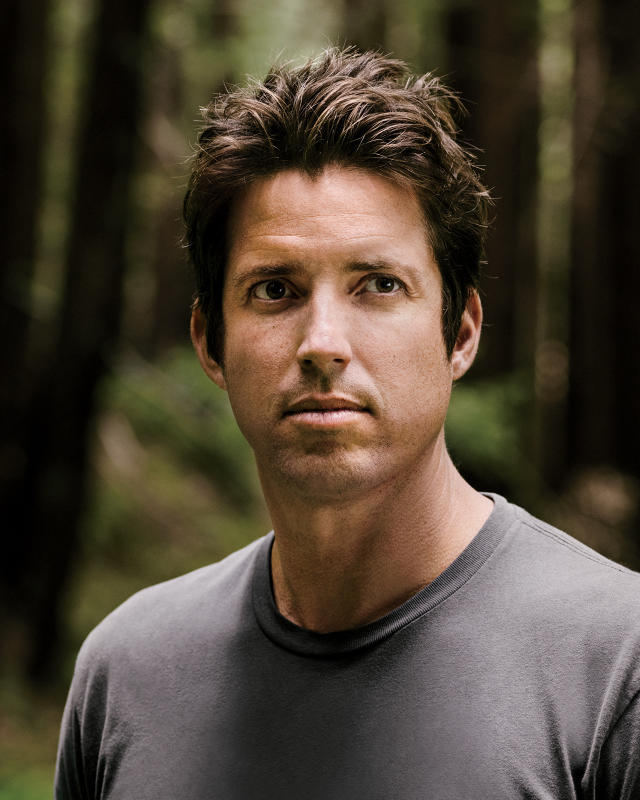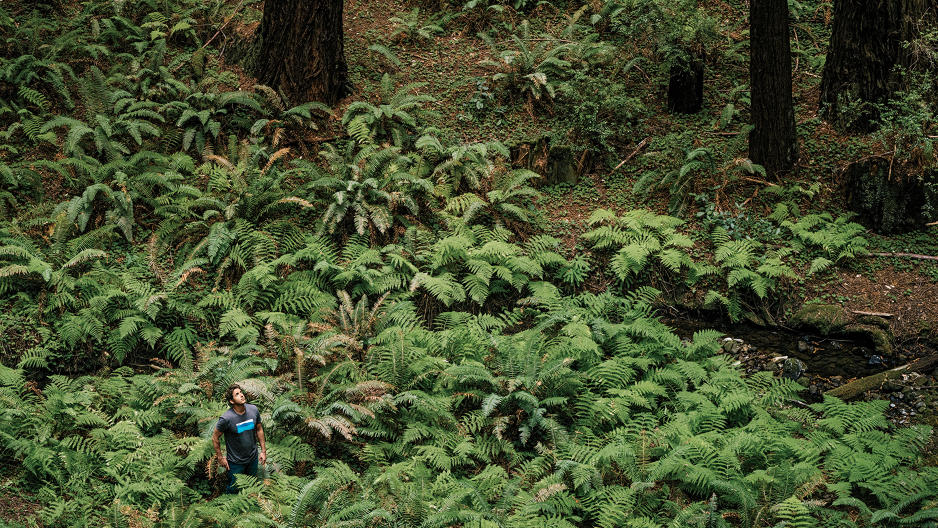Can GoPro Rise Again?
Nick Woodman, the founder and CEO of GoPro, flew into Vail, Colorado, (November 02, 2016) on his private jet. He is here for the GoPro Mountain Games, a weekend-long festival of kayaking, rafting, rock climbing, and just about anything else you can do at an off-season ski resort while wearing a mounted action camera. Woodman, whom college buddy and current GoPro colleague Justin Wilkenfeld describes as less “a 9-to-5-type guy” than “a hippie surfer,” wanders through the tent-covered meadows wearing flip-flops, shorts, and a tank top alongside throngs of action-sports enthusiasts. Passing a funnel-cake vendor, he sniffs something else in the air. Colorado is a popular destination among the GoPro community not just for the adrenaline rush of extreme sports, but also because of plentiful legal weed. When he asks a GoPro events coordinator what he is doing later, the junior staffer avoids eye contact with his boss, shrugs, and a little too adamantly insists, “Nothing. Why?”
Woodman laughs.
“It’s like, dude, I don’t care if you’re going to enjoy some extracurriculars,” he says.
The whole week is one big GoPro-palooza. Everywhere you look, alongside the occasional toker, there is someone doing something worth capturing on video. A woman paddleboards down a brisk stream. A slack-line walker tiptoes over some rapids. A mountain biker bombs down a ski run. A dog jumps off a dock.
Woodman has taken up position among a hundred spectators gathered around an aboveground pool. Arms folded, wearing Persol sunglasses, he watches a wide range of canines leap in after tossed balls, their jumps scored for height, distance, and form. Many of the dogs are wearing GoPro cameras, and half the crowd is holding up GoPros. Woodman does imitations of each canine’s posture in the air, hunching his shoulders, lowering his neck, recessing his jaw, or forming an overbite in his best impression of man’s best friend. A former high school linebacker and avid surfer, Woodman has an easy physicality that he uses in conversations to illustrate a point or reenact an experience. He also has the infectious self-confidence of an entrepreneur who built his own business into a billion-dollar-a-year juggernaut before the age of 40. The GoPro Games are like an annual victory lap for Woodman, a reminder that no matter how battered his company’s stock price—and over the past year or so it has taken a wallop—the brand is still thriving.
When Woodman assembled the first GoPro camera in the early 2000s, he created not just a novel, durable device, but an entirely new market: the action camera. The company grew rapidly, its devices becoming ubiquitous at ski resorts, surf spots, and other adventure destinations. With a huge assist from 140 sponsored athletes, GoPro videos garnered millions of views on YouTube. By 2012, the company v was averaging 100% annual top-line growth. Its 2014 IPO was a wild success, with shares leaping 140% in the first three months. Giddy investors hoped that the upstart tech company could leverage hardware into even more profitable software spaces: media management, entertainment, social networking. But a disastrous 2015—including the flubbed launch of a new camera—punctured that enthusiasm. Revenue for the first quarter of 2016 was down year over year, and a much-anticipated drone release was delayed. When Woodman arrives at the GoPro Games, the company’s stock is flirting with all-time lows, down almost 90% from its peak.

It’s a ride that could make even the most seasoned extreme-sports enthusiast dizzy. Woodman takes a seat on an off-duty ski lift, the high Rocky Mountain sun behind him. And then he dives into his plan for reviving the company he loves. He says that a trio of new products being released this fall—including that delayed drone, called the Karma—will help win over a swarm of fresh consumers. New software will make video editing easier and content even more shareable. He is relentlessly optimistic.
“In a sense, we will make the GoPro a detachable lens of your phone,” Woodman says. “By enabling a GoPro to auto upload its content to the cloud, your footage moves over to your phone. We will blow the doors off this.”
Woodman sees GoPro as a sort of mini Apple, a hardware company that is evolving into a software platform with social networking features. Its business model will even include monthly subscription fees alongside steady hardware upgrades. He evinces no worry about naysayers who compare GoPro to the Flip, the superhot handheld digital video recorder that launched in 2007, quickly dominated the camcorder market, was bought by Cisco in 2009, and shut down in 2011, when video-capable smartphones quickly made it obsolete. Today’s smartphones are becoming ever more durable—both Samsung’s Galaxy S7 and iPhone 7 are water-resistant—while lens quality is rapidly approaching GoPro’s most advanced offering. (The iPhone 7 offers a 12-megapixel sensor, the same as GoPro’s new Hero5, and a true zoom lens, which GoPro’s Hero5 lacks.) “My kids are 16,” says Michael Pachter, an analyst with Wedbush. “And I don’t recall ever going to a soccer game and seeing people with GoPro cameras. They are taking videos on their phone. I think that limits GoPro’s addressable market. Imagine only marketing your shoes to professional athletes. Nike wouldn’t be Nike if they didn’t sell shoes to everyone.”
Woodman’s response to this: The smartphone boom actually works in GoPro’s favor. “You can put a GoPro in places you wouldn’t want to put all your data,” he says. “Like, do you really want your phone, and all your information, attached to a drone 2,000 feet up?” In fact, while we are talking, my iPhone overheats in the sun, causing the voice recorder to fail, but the GoPro camera trained on us records the entire conversation.
Woodman’s office in GoPro’s San Mateo, California, headquarters is just a few miles from the house on Moss Beach where he crafted the first prototype for the GoPro Hero. He’s notoriously prone, once he begins speaking, to going over his scheduled time. As more of the company’s projects have moved outside his area of expertise—software, drones, virtual reality—he has learned to defer more to his staff. He’s married with three children, and his steady enjoyment of his success is evident from how eagerly he shares his experiences, either surf trips to islands off Nicaragua or video clips—some of them shot, he sheepishly admits, on an iPhone—of a lavish birthday with his friends.
His desk is uncluttered. Behind him, a cabinet bursts with souvenirs—motorcycle helmets, giant bottles of wine, an Emmy Award (which the company won for the Hero3 in the Technology and Engineering category), a model of the VW van that he and his then-wife-to-be, college sweetheart and fellow University of California, San Diego, fine-arts major Jill Woodman, drove up and down the California coast selling bead and shell belts she made to help fund the company’s launch.
When Woodman first began envisioning what would become GoPro during a surf trip in Indonesia in 2002, cell-phone cameras were a novelty rather than a standard feature, and nobody dared take a video camera into the water. What Woodman wanted was to capture surfing images from the perspective of the surfer. “I went to a surf shop and bought a bodyboard leash, and I bought all these O-rings and off-the-shelf parts at Home Depot, and I borrowed my mom’s sewing machine,” Woodman says. His first effort wasn’t a camera; it was a strap, onto which he mounted a disposable camera and added a few features so that the camera was easier to click while in the water. The strap worked well enough that Woodman decided that his calling was making exclusively those.
It wasn’t the first business Woodman had attempted. The son of an investment banker who grew up in Atherton, California, Woodman quit his Menlo Park high school football team before his senior season to surf. “Everyone was like, ‘Dude, you can’t quit,’ but then I thought, No, I have something unique going on. And I remember that feeling good. That was my first lesson where I felt that, hey, doing something different from everybody is satisfying.” It was during a golf outing with his father when he was 17 that he decided he wanted to be an entrepreneur. “We were on the seventh hole at Burlingame Country Club in San Mateo, and there was a big old house being built on the side of the fairway, and my dad said, ‘See that house, that’s my friend’s son. His name is Peter Gotcher and he just sold his business.” (Gotcher was one of the founders of ProTools and now sits on GoPro’s board.) Entrepreneurship, his father told him, is one of the most reliable ways to do really well financially. Then Dean Woodman nudged his son and said, “I bet you can do that one day, Nicky. You have a lot of ideas.”
One of Woodman’s earliest ventures, which he started upon graduating from college, was FunBug, an online video-game company that offered users a chance to enter a weekly raffle. Woodman blamed himself when the company didn’t make it. “Here’s something that I learned with FunBug,” he says. “FunBug didn’t fail. I failed. FunBug is just a business. It’s a product of your own creation and the team’s execution, so businesses don’t fail, the people who are running a business fail. That was a difficult time for me.” Woodman gave himself until age 30 to come up with something successful. “Young enough to start a career from scratch, but enough time to make it as an entrepreneur,” he says. “I promised myself that even if I failed repeatedly I would not stop, no matter what.”
The wrist strap seemed an unlikely prospect, but Woodman dug in. As he experimented selling them in surf shops for about $15, he was blunted by the quality of waterproof cameras available on the market, which were often unreliable and tended to crack in rough surf. He tried to license the wrist strap to Kodak so that it could build a better, more dependable camera on top of it. “I thought I could make a couple hundred thousand bucks a year, but they were selling so many disposable cameras anyway, they didn’t see this as part of the future. Kodak not being interested saved GoPro.”
After searching in vain for a durable, waterproof camera at trade shows around the country, he decided to build his own. He set to work on a prototype, in what can only be described as obsessive fashion. He wore a CamelBak backpack for rehydration and worked 18- to 20-hour days, carving and shaping plastic with a Dremel and using a glue gun to affix plastic buttons and lenses. He sent his model to Hotax, a Chinese camera company, and it sent him back a digital file that he couldn’t open. It took him a few hours to figure out it was in a standard format for 3-D modeling, and when he finally glimpsed and rotated the model, with the water housing and all the fit points that would allow it to stay attached to an athlete at play, “I was so stoked.” With around $20,000 left over from FunBug (and his wife’s shell belts), plus a $200,000 loan from his parents, he made a deal with Hotax to manufacture each camera for about $3 and sold them at surf shops for $14. The first GoPro Hero was born.
Woodman, with each ensuing iteration, showed an uncanny knack for product design, and GoPro quickly became the dominant player in what has grown into a $6 billion market, selling more than 5 million cameras a year. Along with the steadily rising sales, Woodman now admits, came a pretty bad case of founder’s hubris. The company was a media darling, with Woodman the subject of glowing profiles and the durable cameras helping to redefine action sports. The “GoPro video” became a genre unto itself—jerky, POV shots that provided the viewer with a taste of the experience. The GoPro channel on YouTube attracted more than 4 million subscribers and over a billion video views, and the cultural reach of the company transformed the sports landscape, with athletes able to film themselves using smaller, lighter cameras than ever before. “It’s a huge shift,” says professional snowboarder Mike Basich. “You don’t need a cameraman. In the past, you always had a crew. Now you can steer your expression closest to what you experience yourself.”
For sports like snowboarding, skateboarding, skiing, and surfing, the arrival of GoPro accelerated the trend toward more and better footage, while the explosion of social media meant there were now numerous outlets for amateur athletes to share that content.
The company had achieved that rarest of parlays: It was both cool and a great business, with universal recognition within its category, bountiful goodwill from a youthful market, and margins on individual cameras of close to 50%. Wall Street was similarly infatuated, and a few months after the company went public, in June 2014, the company introduced the Hero4 Silver, its best-selling camera. That October, GoPro’s stock peaked at nearly $94. Almost immediately, Woodman angered investors with a surprise donation of 5.8 million shares of GoPro stock to the Silicon Valley Community Organization, which diluted shareholder equity. Soon, according to Woodman, “the afterglow started to wane a little bit. We had so much publicity from the IPO, we didn’t recognize the need to ramp up our marketing.” Even as demand for cameras began to slacken, GoPro continued to rely on viral videos and word of mouth instead of more strategic advertising.
Analysts and reporters began asking if GoPro had saturated its market. How much more than 50% of the action-camera industry could it really take over? (Sony, Garmin, Praktika, and a host of other cheaper alternatives had by then carved out single-digit market-share niches.) In the overall video-camera field, GoPro was already selling six of the top 10 most popular cameras. Where was growth going to come from?
A great new product might have calmed these concerns. But instead, in July 2015, the company launched the $399 GoPro Hero4 Session, a point-and-shoot camera that bore an unfortunate resemblance, in style if not function, to a competing $99 offering from Polaroid. The company and Woodman were widely pilloried for overcharging for an underwhelming product. (It lacked an LCD screen and 4K capability.) GoPro eventually dropped the Session’s price to $199, and Woodman went on QVC himself to try to move units. Revenue in the third quarter of 2015 missed the lower end of GoPro’s guidance, and a lull set in. In the first quarter of 2016, revenue was down 50% year over year. In May, shares hit a low of $8.80.
Sitting in his office reflecting on this history, Woodman leans back in his chrome armchair, puts his hands together in almost a parody of a man in contemplation, and takes full responsibility for GoPro’s missteps. “I’m the one who made the mistake on pricing Session, I’m the one who made the mistake with pulling back on marketing, I’m the one who made the mistake with releasing too many products at the expense of consumer confusion. These were my calls,” Woodman says. He was, he insists, swept up in his own success. Woodman truly believed the Session was a remarkable camera: waterproof in its own casing, easy to use, essentially a one-button-capture solution. But he says that greed got the better of him: He priced it too high. “At the end of the day, it’s hard to call it anything else. But we thought it was so good it would be worth it.”
The Session debut, and the disappointing sales that have haunted the company over the past year, marked what could now be considered the end of the beginning for GoPro. “The media were hard on us when we stumbled, but we deserved it,” he says. “What you didn’t see from us was lashing out and saying, ‘You don’t understand.’ We acknowledged it. We put down our heads, determined what was wrong, and said we were going to fix it.”
A big part of the fix is supposed to be the Hero5, which launches in October. The most advanced GoPro yet, it will have a faster processor, built-in waterproof casing, linear horizon stabilization, and improved sound quality, including automatic microphone adjustment when there is noise or hiss from wind or weather.
But it’s a new software package, internally code-named Yellowstone, that is potentially the biggest advance. Even GoPro’s most devoted users have long bemoaned that, as easy as it is to capture footage with a GoPro, moving that footage from camera to computer or phone, editing it into a compelling video, and then sharing it to a social media platform is too hard. Every step of the process, from turning on the camera’s built-in Wi-Fi to transferring the footage to editing those images into a punchy, short clip, has been slowed down by what Woodman himself describes as “pain points.”
I happened to ride back from the GoPro Games in Vail to Denver International Airport with C.J. Prober, the senior vice president of software and services for GoPro, and the whole ride back both of us were editing footage of our day spent whitewater kayaking. The drive was approximately two hours, and all that time we had our heads down, clipping and transferring footage. Occasionally, I had questions about moving data from the two GoPros I was using to my phone in order to do an edit. Prober, an Electronic Arts veteran, knows GoPro software literally better than anyone, and twice, he was stumped by my technical issues.
While avid athletes may be willing to spend a few hours editing down that day’s session to a cool three-minute video, most of us don’t have the patience. “There is a lot of unwatched and unedited GoPro footage out there,” says Brad Erickson, an analyst with Pacific Crest Securities. “It’s daunting to capture video and deal with editing it. If you ask a lot of people who bought GoPros two years ago how much they really use them and ultimately what the utility was for that device, you find a broad range of answers, including: ‘We’ve used it twice and haven’t taken it out of the box since.’ ”
Woodman once again blames himself for how slow GoPro has been to address these limitations. “I underestimated the size of the team and experience needed in leadership to develop the software experience that we needed,” he says. “It’s an entirely different skill set and approach than hardware.” Woodman, who dropped his one programming class in college—”I have never tried so hard to be so sub-mediocre at anything in my life”—in 2014 hired Prober, along with veteran tech company executive and network and infrastructure pro Tony Bates, who became president. When we all gather in Woodman’s office a few weeks later, Woodman eagerly points to both hires, and several more in software and new products, as examples of his taking ownership of his own mistakes, citing one of GoPro’s six core values, Integrity Always, as the source of inspiration.
“Make Friends. Haul Ass. No Half-Assery. Then, um,” Woodman says, pausing to try to remember GoPro’s core values. “The last one is Be a Hero, and then, above that is Integrity Always. Maybe it’s just five core values? How many core values do we have? Oh, Maintain Balance is the one I forgot. How many is that? Anyway, you have to take ownership of your mistakes. People respect that.”

The company also acquired two mobile-based video-editing platforms, Replay (which evolved into Quik) and Splice, for a combined $105 million in 2016, integrating both into a broader vision that Prober describes as a “seamless experience, from capture to share—intelligent systems that recognize the highlight moments of your life and automatically uploads that to the cloud so that it is waiting for you on your computer at home when you open the app.”
In demonstrations, the new software package allowed me to offload, pluck clips, edit, play, and share videos rapidly and easily. But will the upgrade fundamentally shift GoPro’s business model? “The easiest way of understanding where we are and where we want to be is, up until the launch of Hero5 and Yellowstone, GoPro has arguably been an iPod-like success, but without its iTunes,” Woodman says. “Imagine if Apple hadn’t launched iTunes? The iPod would be just another MP3 player. Apple [made] it easy for people to consume and manage massive amounts of content.” But unlike iTunes, this software comes with a price: $5 a month. Whether charging that fee is another example of greed or rather a smart, strategic expansion of revenue streams remains to be seen.
GoPro is also developing a variety of short-form narrative shows on its YouTube channel, some of them only available on a subscription basis. Sitting at the nexus of social media and high-resolution video has meant that GoPro was, from the start, an entertainment brand as well as a consumer electronics manufacturer, and the company continues to use this to its advantage. (Perhaps only Red Bull has been as successful at marketing itself through creating and distributing action-sports footage.) The GoPro Awards program, which flows free product and massive publicity to amateur GoPro users, has been a successful adjunct to sponsoring athletes, who typically create the best and most-watched videos. Now the company is looking to do even more, by partnering with the likes of soccer team Real Madrid and Moto GP superstar Valentino Rossi and developing original programming set to debut the end of 2017. “We drive revenue in a number of ways,” says Ocean MacAdams, vice president of GoPro Entertainment. “From YouTube, from our audience sending us stuff that we can license to other users, and [from] working with [other companies] to create revenue around their brands,” such as a recent series produced with Ford around the launch of a new truck. “We’d love people to buy the cameras,” he says, “but we also know there are people who enjoy our entertainment program who don’t own a camera. GoPro programming is one more way to get them into the ecosystem, and then eventually make a camera sale.”
Karma, GoPro’s new drone—or, excuse me, as GoPro calls it, “aerial capture device”—is another example of how the company is hoping to lure new user groups. The drone market, according to several analysts who follow the company, is potentially as large as the action-camera market, and faster growing, but it is already dominated by a big player, Chinese company DJI and its flagship product, the Phantom 4. “If [GoPro’s] drone is successful, that is one quick route to doubling the size of the company,” says Dougherty & Company analyst Charles Anderson. Speculation about the GoPro drone product had been fevered for the first half of 2016, and the company’s announcement in April that it would be delayed further hammered the stock. Now, Woodman believes, GoPro has nailed it, unveiling a package that includes a four-propeller drone, a GoPro Hero5 camera, a handheld remote, and a detachable, three-axis gimbal—or stabilization device—which makes the Karma a one-stop solution for image capture, be it terrestrial or aerial. The product is intended to go from its sleek backpack to taking flight within two minutes, the wings and landing gear folding out easily. (Setup and assembly for most higher-end drones, including a Phantom 4, can ruin a Christmas morning.) Pablo Lema, GoPro’s senior director of aerial products, insists that Karma is the logical extension of the company’s mission of capturing cool footage. “If you think about it, a drone is nothing more than a really, really complicated selfie stick that lets you position it anywhere in the world.” From an image-capture standpoint, Karma is a killer camera, due to the combination of the Hero5, that superior gimbal, and the front-mounting of both, a thorny engineering problem that Lema’s team cracked. (Consumer drone footage has long been plagued by the visibility of rotors in the corners and sides of the images. Karma’s camera placement solves that.) “We’re making it easy to get previously unimaginable footage of your life,” says Woodman.
But Karma isn’t going to win any drone races. It’s slower than the Phantom 4—and the foldable Mavic Pro, which DJI launched in late September—and lacks its competitors’ Follow feature, which enables the drone to trail the user to capture footage, along with its obstacle-avoidance capabilities and range. GoPro is wagering that the Karma package will entice both the first-time buyer and its preexisting user base, who instead of plunking down $400 for a Hero5 may figure that $1,100 for the whole lot is too good a deal to pass up. (The list price for the Phantom 4 is $1,400.)
“It’s as though we’ve put Hollywood in a backpack,” says Woodman. “All of it is super-easy to use. It’s so comfortable you will forget you even have it on.” The goal, Woodman says, “is to make the drone a part of your experience, rather than making the experience all about the drone.” (The dream of many snowboarders and surfers—to have their GoPro hover overhead and nab aerial footage of them during a session—is still a couple of software iterations away, Lema says. “That’s a desired use case. We have to make it work really well. We are confident we will get there, and more.”)
To get all its new products out, GoPro has been burning through money at a faster rate than at any time since 2010, and finds itself in the third quarter of 2016 with less cash on hand than any other point since going public. It has other brand-new offerings on the market, including a potentially game-changing, $5,000 virtual-reality camera rig, the Omni (made of six Hero4 cameras shooting 360 degrees), along with a VR software-management package. But Woodman will need to demonstrate more attention to deadlines—no more delayed launches—if he wants to prove that the lessons of the past year have really been learned.
Perhaps he’ll succeed in creating a “mini Apple,” expanding the action-camera enterprise into a digital subscription ecosystem and building a drone business that further integrates the company into its users’ lives—and wins over new users outside the action-sports community. But even if the bets on software and flying machines don’t pay off, that doesn’t mean GoPro will go the way of the Flip. As a simple camera company, GoPro remains hugely successful, pulling in $1.6 billion in 2015. “They don’t need to be like Apple,” says analyst Anderson. “They just need cameras that are functional, and editing software that is functional. They can be a great company at right around a billion in revenue and pay a healthy dividend and life’s fine. But it doesn’t seem like that’s where they want to go.”
“No,” Woodman says, adamantly. “We make the best cameras in the world, and volumes are big. But we can be even more.”
A version of this article appeared in the November 2016 issue of Fast Company magazine.
Fast Company , Read Full Story
(45)














